The Hierophant
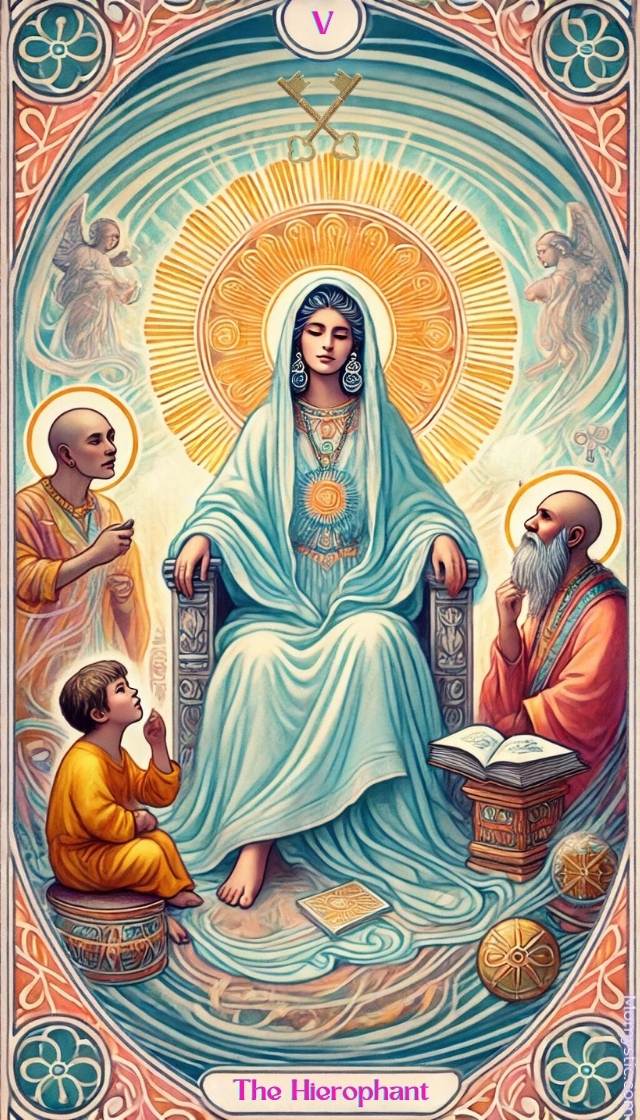

The Hierophant
Upright: Tradition, wisdom, spiritual guidance, authority, education, teaching, mentor, structure, conformity, belief systems, religious practices, values, community, learning, spirituality, cultural heritage, conventional, group identity, moral lessons, rituals, faith, ethical teachings, stability, sacred knowledge, divine connection.
Reversed: Rebellion, breaking tradition, questioning authority, nonconformity, spiritual freedom, rejection of dogma, personal beliefs, alternative paths, inner guidance, challenging institutions, independence, unconventional thinking, resistance to rules, freedom from structure, outgrowing tradition, lack of faith, doubt, individualism, disconnection, disruptive influence, spiritual crisis, conflict with authority, inner teacher, anti-establishment, moral conflict.
The Hierophant Tarot Card: How It Relates to Motherhood and Family Life
Tarot cards are rich in symbolism, each card holding a distinct message or energy that can offer profound insight into our lives. The Hierophant, card number V in the Major Arcana, is often interpreted as the wise teacher, spiritual authority, or traditional figure who stands at the gateway between the earthly and the divine. But as with every tarot card, its meanings can shift depending on its context, the reader, and the situation in question. In this article, we will dive deep into the essence of The Hierophant, how it manifests in our roles as parents and children, and its guidance through life transitions, especially in motherhood.
The Hierophant in the Context of the Tarot Journey
To truly understand The Hierophant, it’s helpful to consider the cards that precede and follow it in the Major Arcana. Directly before The Hierophant, we find The Emperor, representing authority, structure, and law—earthly power grounded in order. The Emperor is the one who builds the foundation, ensuring security and stability through clear rules and boundaries. In contrast, The Hierophant represents spiritual authority, tradition, and collective belief systems. Where The Emperor governs through physical control, The Hierophant governs through spiritual or societal guidance, acting as a bridge between earthly and divine laws.
Immediately after The Hierophant comes The Lovers, symbolizing choice, harmony, and personal alignment. This transition from The Hierophant to The Lovers marks a shift from external, institutionalized structures to personal relationships and inner moral codes. It suggests that after learning and absorbing tradition and societal values from The Hierophant, we are then faced with the challenge of integrating those lessons into our personal lives and making our own choices about what aligns with our hearts.
In this way, The Hierophant serves as a pivotal guide, standing between the ordered structure of The Emperor and the intimate connections of The Lovers. It asks us to contemplate the beliefs, values, and spiritual teachings we have inherited and how we apply them in our personal lives.
The Essence of The Hierophant
The Hierophant embodies the figure of the spiritual teacher or guide, representing organized belief systems, religious traditions, and cultural heritage. When this card appears, it often points to themes of education, tradition, and learning from established wisdom. Think of The Hierophant as a conduit between the earthly and divine realms—a mentor who shares spiritual teachings to help individuals align with a greater sense of purpose or a higher truth.
The Hierophant isn’t just about following the rules for the sake of it; rather, it encourages us to learn from the past and integrate wisdom passed down through generations. It can represent conformity, but it can also be about honoring tradition, finding meaning in rituals, or aligning with collective values. There’s a reverence for structure in The Hierophant that can be stabilizing, offering guidance when navigating complex moral or spiritual dilemmas.
For mothers, The Hierophant can act as a reminder to honor both your personal wisdom and the ancestral wisdom passed down to you. It’s a call to reflect on the spiritual beliefs or traditions that have shaped your understanding of motherhood and life.
The Hierophant as a Parent
As a parent, The Hierophant speaks to the role of mentor and guide. Parenthood is often about creating structure, providing guidance, and acting as a pillar of wisdom for your children. The Hierophant, with its connection to tradition, authority, and education, mirrors the role many parents take on as transmitters of family values, cultural beliefs, and moral lessons.
In a practical sense, The Hierophant asks parents to consider the traditions they are passing down. Are the beliefs you instill in your children aligned with your deepest values? Are you leading by example in how you navigate life’s complexities?
The card may also call attention to the idea of community in parenting. The Hierophant is not a lone figure but one deeply connected to a collective system of beliefs. For parents, this could represent reliance on a support network—whether it’s family, friends, or a broader cultural or religious community. It’s a reminder that parenting is not meant to be a solitary endeavor. We thrive when we seek wisdom from others and honor the traditions and teachings that come from our community.
The Hierophant can also indicate that, as parents, we must teach our children the value of spirituality, community, and shared belief systems. However, this card also asks parents to be mindful not to impose rigid dogma on their children, but to foster an environment where spiritual exploration and moral grounding coexist with personal freedom.
The Hierophant as a Child
Seen through the eyes of a child, The Hierophant represents the rules, structures, and traditions they are born into. Children naturally look to their parents and elders for guidance, often seeing them as The Hierophant figures in their early lives.
A child in the energy of The Hierophant might be particularly inquisitive about the “why” behind family traditions or societal norms. This curiosity is an opportunity for parents to explain not just the what but the deeper meaning behind shared rituals and customs. It’s a time for storytelling—linking personal family history or spiritual lessons to broader themes of human experience.
However, as children grow and mature, they may come to question the teachings of The Hierophant, much like the transition from The Hierophant to The Lovers. Adolescence is often a time when young people start to push against established traditions, trying to understand which beliefs truly resonate with them on a personal level. This questioning is healthy and natural; it’s a sign of growing autonomy and the development of personal identity.
Parents should embrace this phase, allowing children to explore and even challenge the values they’ve been raised with. It’s important to hold space for this process, trusting that the guidance provided by The Hierophant has laid a solid foundation for the child to make thoughtful, conscious choices in their own spiritual and moral journey.
The Hierophant and Life Transitions
The Hierophant frequently appears during life transitions that involve a shift in belief systems, entering new communities, or embracing tradition. This could be a moment where you’re either turning to time-honored wisdom for guidance or challenging the structures you’ve previously adhered to.
For mothers, this card may emerge during key transitions, such as the journey into motherhood itself. Many women find that becoming a mother forces them to re-examine their values, beliefs, and spiritual practices. The Hierophant could be guiding you to seek support from ancestral wisdom or cultural traditions to navigate this new chapter.
It also speaks to the importance of ritual and tradition in marking significant life transitions. Whether it’s a baby blessing, naming ceremony, or another rite of passage, The Hierophant encourages us to lean into these traditions to find meaning and connection during times of change.
Reversed Interpretation of The Hierophant
When The Hierophant appears reversed, it often signals a rebellion against traditional structures or a questioning of established norms. In the context of motherhood, this might suggest a time when you’re challenging the conventional wisdom on parenting. Perhaps you’re questioning societal expectations of what it means to be a “good” mother or reconsidering the roles that religion or tradition play in your family life.
The reversed Hierophant can also indicate a desire to break free from dogma, urging you to explore new spiritual or philosophical paths that resonate more authentically with you. You might be drawn to less conventional parenting methods or seeking a more fluid and adaptable approach to raising your children.
This card could also represent a conflict with authority figures or institutions, such as clashing with the advice of your own parents or feeling restricted by societal norms. The reversed Hierophant asks you to evaluate which traditions or teachings serve your highest good and which might need to be reworked or left behind.
The Hierophant’s Wisdom for Motherhood
At its core, The Hierophant reminds us of the importance of wisdom passed down through generations. As mothers, we are both the carriers of tradition and the creators of new ways of being. The Hierophant teaches us to honor the wisdom we have received—whether from our ancestors, community, or spiritual guides—while also remaining open to new teachings that align with our evolving understanding of motherhood.
In motherhood, The Hierophant encourages us to create space for both structure and spiritual inquiry. We are not meant to parent in isolation but to lean on collective wisdom and shared experiences. Yet, we must also leave room for flexibility, questioning, and growth. After all, the most important lessons we pass on to our children are not just the ones we’ve inherited, but the ones we’ve learned through our own experiences.
In the end, The Hierophant serves as a beacon of stability, reminding us that in our roles as mothers, we are both teachers and students, mentors and seekers, tradition-bearers and innovators. By finding a balance between honoring the past and embracing the future, we can provide our children with the tools they need to navigate the spiritual and moral challenges of their own lives.

The Wild & Sacred Feminine
Unlock the sacred feminine within using this 52-card oracle deck.

Goddess Dream Oracle
Wendy Andrew channels divine feminine wisdom in her art.

Seeds from the Sacred Feminine
52 cards of original Métis art to explore your inner truths.

The Wild & Sacred Feminine
Unlock the sacred feminine within using this 52-card oracle deck.

Goddess Dream Oracle Deck
Wendy Andrew channels divine feminine wisdom in her art.

Seeds from the Sacred Feminine
52 cards of original Métis art to explore your inner truths.
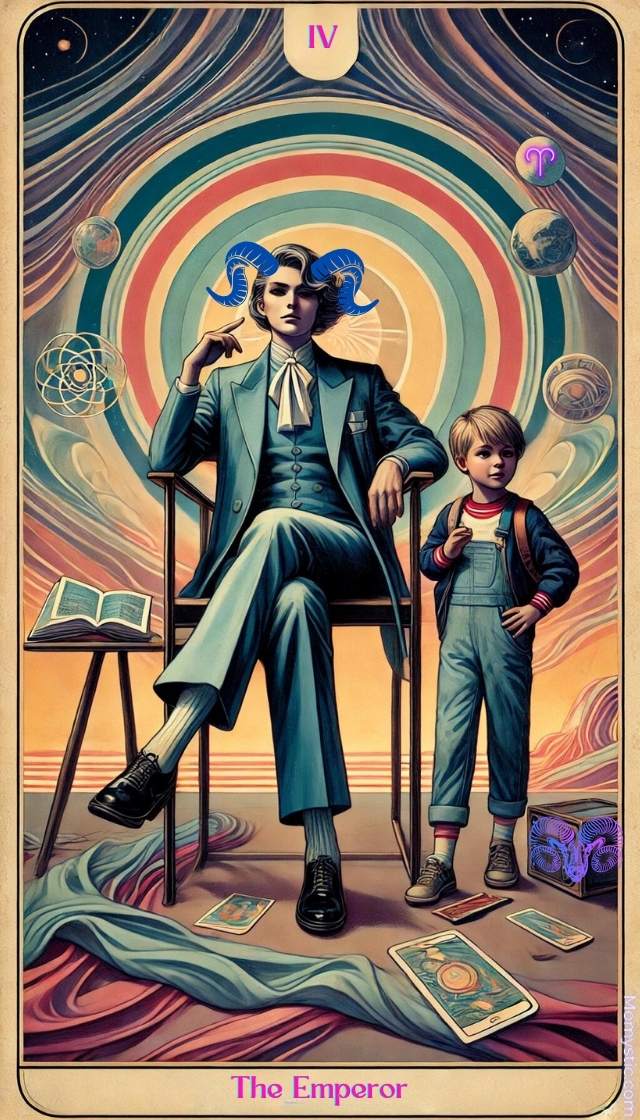
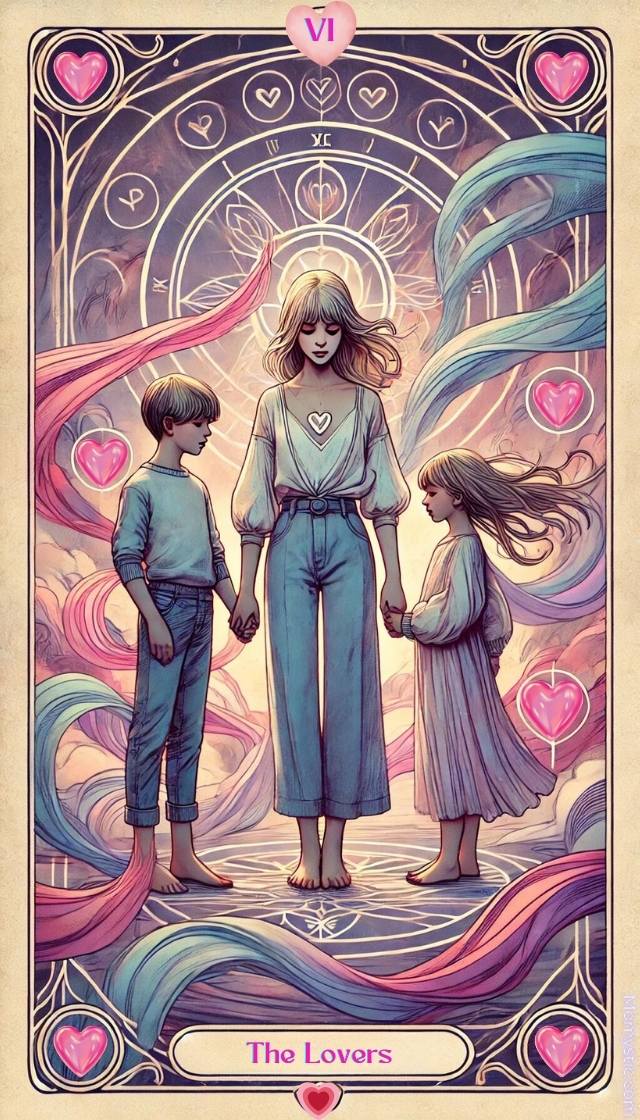
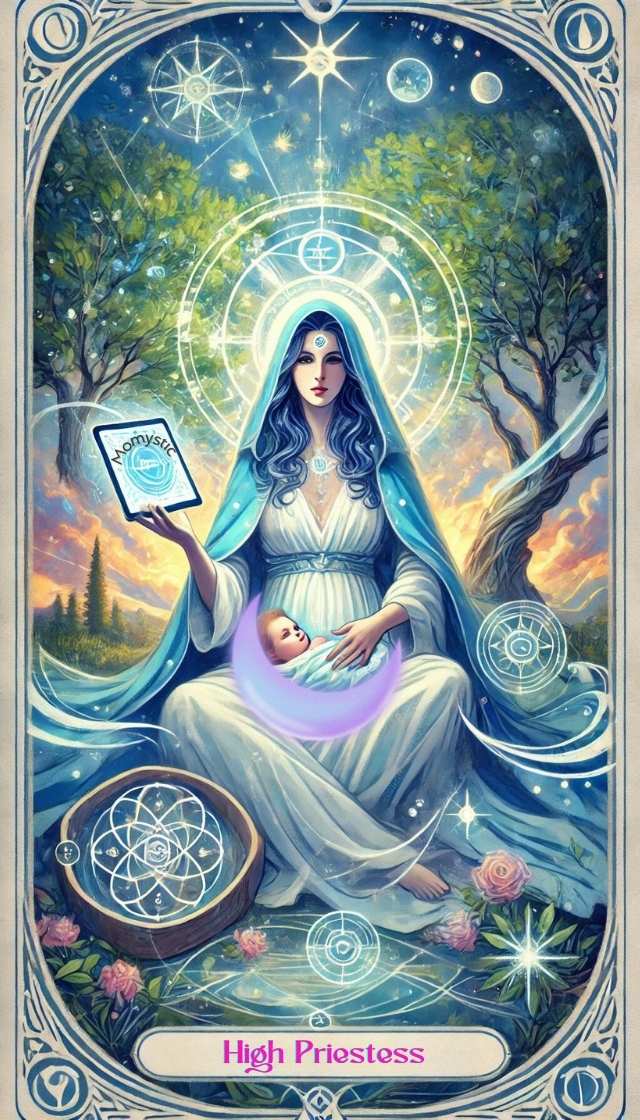
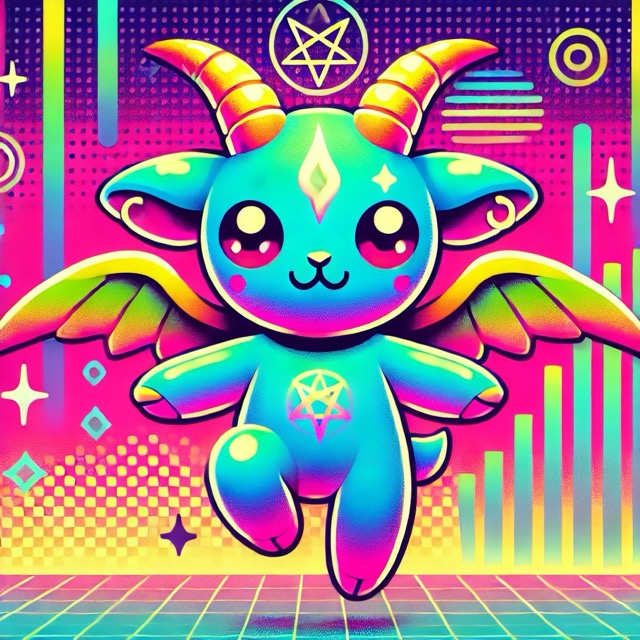
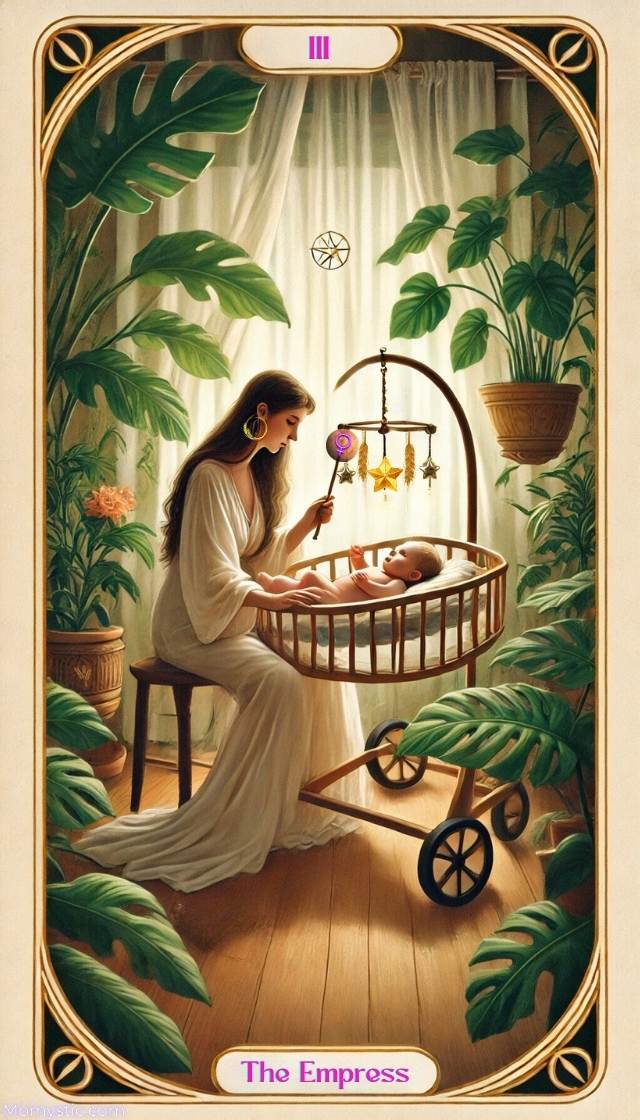
Responses